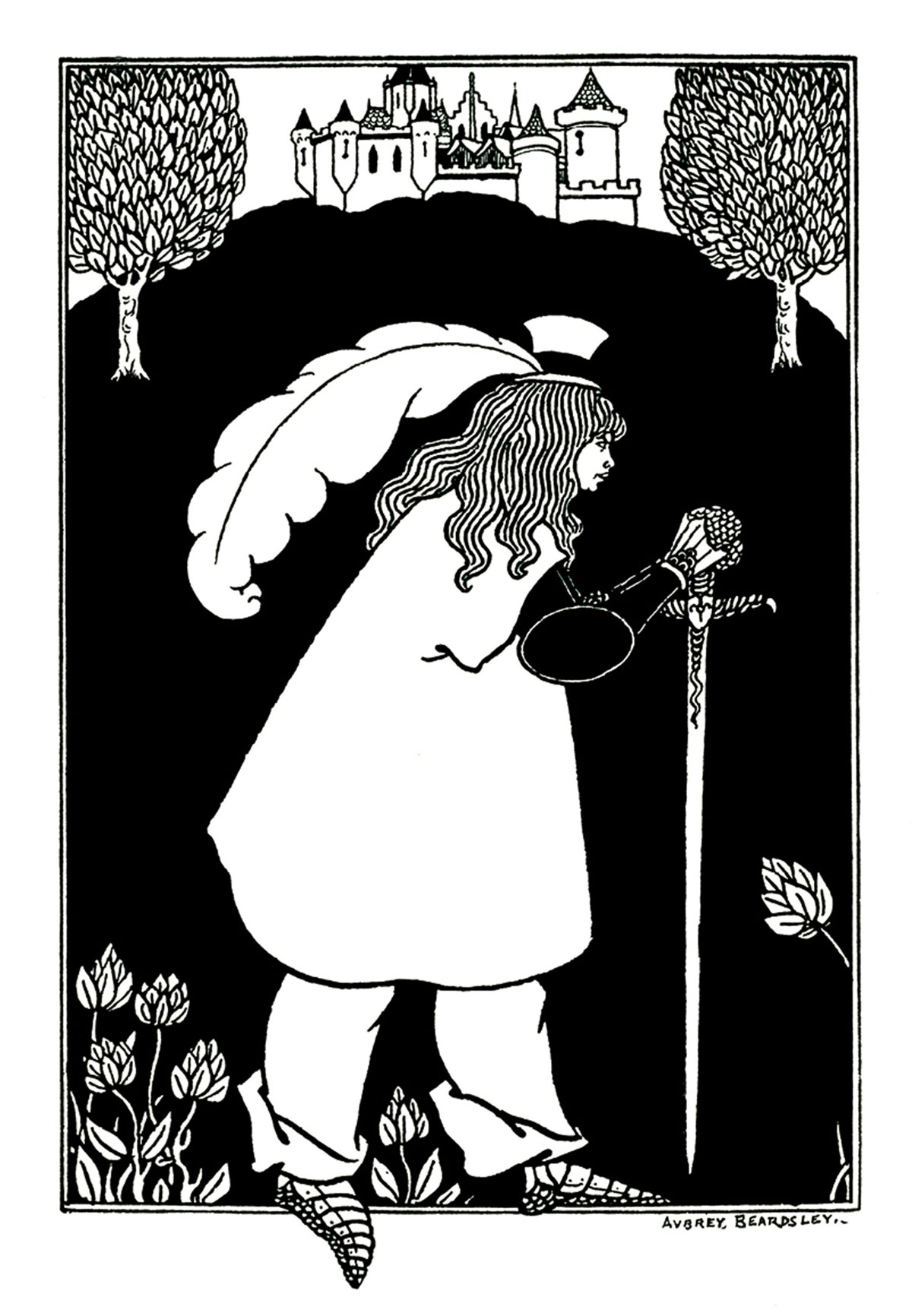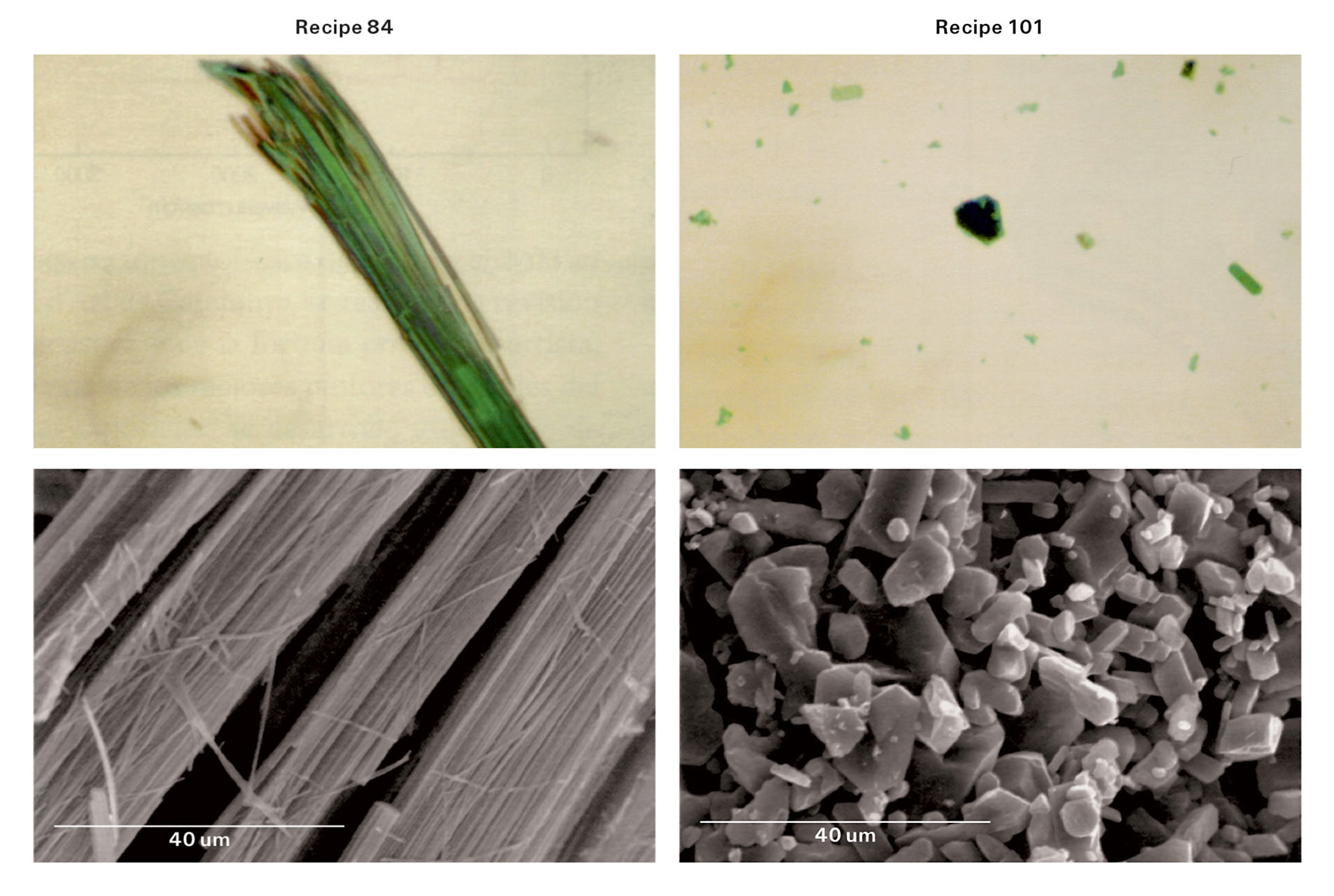Colors / Verdigris
Vegetable and metal
Jeff Dolven
“Colors” is a column in which a writer responds to a specific color assigned by the editors of Cabinet.
The Baron Verdigris, despite his name, was black and white. This could hardly be helped in Aubrey Beardsley’s pen-and-ink frontispiece to Baron Verdigris: A Romance of the Reversed Direction. But the Baron acquires little more color from the prose of Jocelyn Quilp, the possibly pseudonymous (and if not, now forgotten) author. His skin is pale; his moustache is of an “inky blackness.”[1] Beardsley omits to ink that signature feature, but its blackness greatly impresses the Lady Meningitis, the Baron’s consort. She sings,
Verdigris, oh Verdigris!
My love for thee will never cease.
The night is dark that tempests lash
But not as dark as thy moustache,
My Verdigris![2]

Nor is there much color elsewhere in the book, aside from the blood spilled by the Baron in his gentlemanly rampages. So his surname—which calls to mind a distinctive, half-organic, half-metallic green—is something of a puzzle.
It would be a mistake to credit Baron Verdigris with the deepest literary guile, but the book, published in 1894, is nothing if not clever, and there may be an answer to the puzzle in its subtitle, A Romance of the Reversed Direction. Quilp’s conceit is that her hero, an eleventh-century aristocrat, has discovered the secret of time travel without getting very good at figuring out when he is. Having toured the fin de siècle, he knows his future as the past, and he is constantly toggling between the dialect of a Victorian toff and a Shakespearean king. It is this dislocation that shows his true color: for verdigris is imbued with temporal paradox. Colloquially, it is the patina that convinces us of the age of bronze statues and copper roofs. In more technical usage, it refers to the blue-green, green-blue, and green copper salts of acetic acid (copper acetates). Either way, it is a peculiarly verdant rust: a sign of age, in the livery of spring.
The name verdigris means the green of Greece, viride graecum, and by the time Pliny writes of it in his first-century Naturalis Historia its use as a pigment was apparently already well established. (As a remedy, too, for ailments ranging from watery eyes to leprosy.) How was it made? Pliny recommends “drilling holes in white copper and hanging it up in casks over strong vinegar”; you can then scrape the green film from the copper (it is mucilaginous in texture at this stage, hence the early anglicization verdigrease).[3] By the time European painters began to use it as a pigment, many refinements had been introduced, and the vineyards of Montpellier gradually became the most important and productive sources for the stuff. The Montpellier method—as Jacques Montet described it for Diderot’s Encyclopédie—was to layer copper strips with fermented grapes in earthenware jugs. Over three or four days, the acid in the grapes would form white crystals on the strips; the strips were then removed from the jugs and laid out on a rack, where they were periodically wet with wine until that valuable green film had formed. Given that the whole process was a kind of accelerated aging, wine would seem to be a fit collaborator. (Interestingly, the production of verdigris in Montpellier was a business largely controlled by women: in this sense, verdigris was ahead of its time.)[4]

If the process was cumbersome, the results were unmatchably lush, a vibrant green that fertilized the painters’ foliage and spotlit their drapery. The literature on pigments is filled with complaints about the tendency of verdigris to dull and blacken over time, completing its career as rust.[5] But the process could be halted with varnishes, and in oil paint verdigris was much more stable; indeed, it positively ripened, with the bluish green of its first application becoming, over the first month or so, vivid and pure as a spring leaf.[6] Well into the eighteenth century, its rivals—various mixes of yellows and blues, malachite, or green earth—paled by comparison. One can see it to good effect in the fabrics of Titian’s Vanity of the World (ca. 1515) or the forests of Abraham Janssens van Nuyssen’s Diana with her Nymphs (ca. 1610). And we are every day surrounded by its vernacular beauty, spreading over shining metals like lichen on a stone, or sober algae on a bright pool.
Despite his privileged relation, the Baron gives no sign of caring about all this art history, or beauty. He is only out to poison Lady Meningitis, if he can figure out how to do so without anachronism. The one unmistakable green in his romance is the cloth binding, which has held its color for over a century by virtue of the sort of coal-tar synthetic pigment that consigned verdigris to art history (along with its poisonous successor Scheele’s Green, which, as a pigment in wallpaper, laced the drawing rooms of nineteenth-century Europe with arsenic).[7] It may be that the illustrator Beardsley had the Baron’s greeny name on his mind in making that frontispiece. If the blacks are dark as the Baron’s heart, the articulated plate of his armor looks a lot like the leaf-work in the four corners of his composition—a little allegory, if you’re searching for one, of the paradoxes of verdigris, vegetable and metal, permanence and transience, chlorophyll and corruption. But for all that, there is a straighter path to the problem in a more familiar source, one with a nobler, if still equivocal, hero. In Book VI of the Aeneid, Virgil recounts with grim respect the strength of the ancient ferryman Charon, deo viridisque senectus: the old age of the gods is green.[8] What is that green, but verdigris?
- Jocelyn Quilp, Baron Verdigris: A Romance of the Reversed Direction (London: Henry and Co., 1894), p. 19
- Ibid., p. 68
- Pliny, Naturalis Historia, trans. H. Rackham (Cambridge, MA: Harvard University Press, 1940), vol. 9, p. 209
- Reed Benhamou, “The Verdigris Industry in Eighteenth-Century Languedoc: Women’s Work, Women’s Art,” French Historical Studies, vol. 16, no. 3 (1990), pp. 562–566
- Margriet van Eikema Hommes, Changing Pictures: Discoloration in 15th–17th-Century Oil Paintings (London: Archetype, 2004), pp. 59–62
- Hermann Kuhn, “Verdigris and Copper Resinate,” Studies in Conservation, vol. 15, no. 1 (1970), p. 16
- Victoria Finlay, Color: A Natural History of the Palette (New York: Ballantine, 2002), pp. 263–266
- Virgil, Eclogues, Georgics, Aeneid, trans. H. Rushton Fairclough (Cambridge, MA: Harvard University Press, 1999), pp. 526–527.
Jeff Dolven teaches English at Princeton University. He is the author of Scenes of Instruction (University of Chicago Press, 2007), and his poems have been published in the Paris Review, the Times Literary Supplement, and elsewhere. With D. Graham Burnett, he organizes the Poetry Lab series at Cabinet’s event space.
Spotted an error? Email us at corrections at cabinetmagazine dot org.
If you’ve enjoyed the free articles that we offer on our site, please consider subscribing to our nonprofit magazine. You get twelve online issues and unlimited access to all our archives.